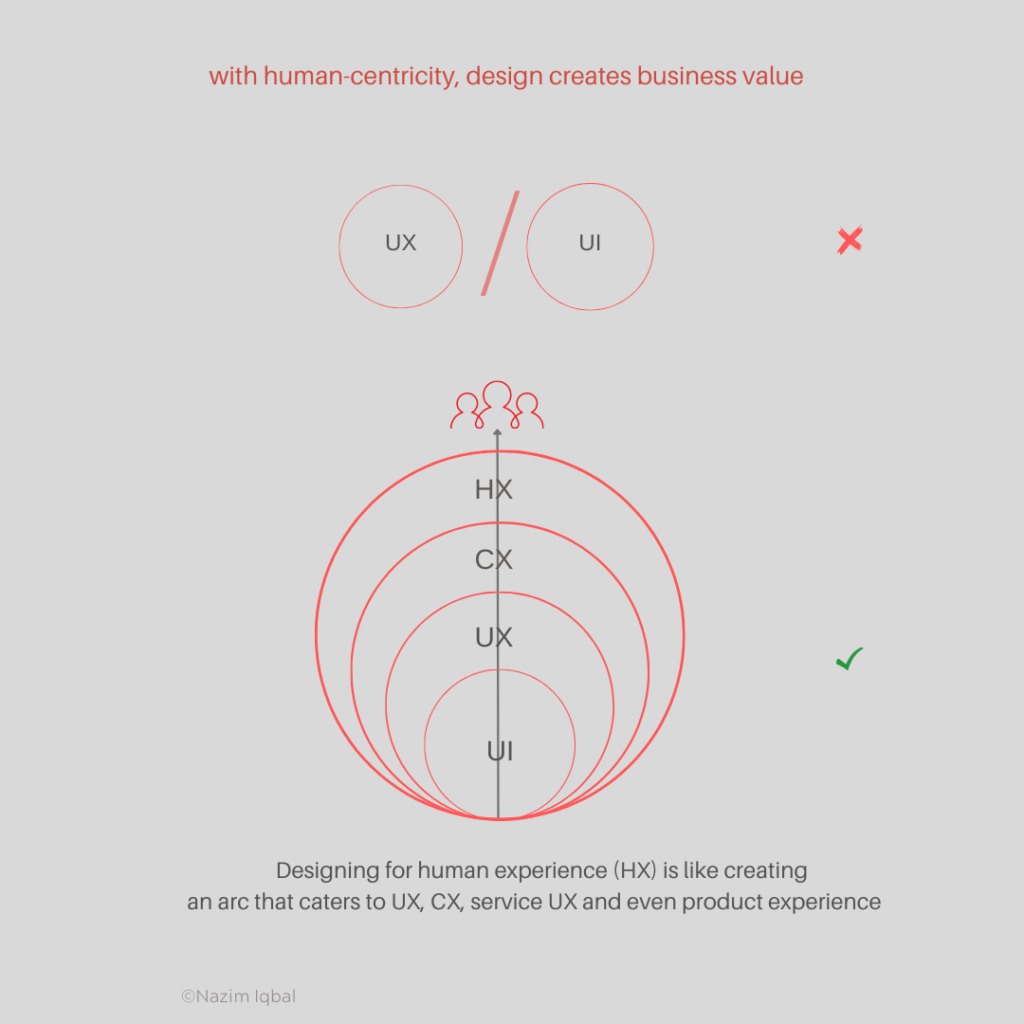Over the last few years, we have made huge progress in adoption of design by businesses, brands, and in the civic space.
But even now when I head into meeting with key stakeholders in evolved corporate organisations or government departments looking to bring ease of use to their technology stacks, I encounter prejudices and hand-me-down assumptions.
One of which is the random use and ambidextrous clubbing of UX & UI. Whether it is UX & UI or UI & UX, the pairing has caught everybody’s imagination who is looking walk the digital path. So, whether it is the CTO, CPO or CDO looking to bring an ounce of user friendliness to their products or wanting to improve accessibility of their technology stack for humans – they somehow evolve a notion that all of it is a UX & UI ride.
UI is a small sub-set of the UX. UX is the experience layer of the product which combines, in varying degrees, copy writing, interaction design, visual design, iconography, motion design, and in many cases, voice and audio design.

The world of experience is much wider and deeper both at the organisation, product or service level. It requires not just digital and design acumen, but a collective human perspective of emotions, ethics, human behaviour and a large dose of measured maturity. Such holistic thinking and approach build design experiences that are inclusive and accommodate diversity of human inanities, fallacies, and cultural dichotomy.
We are now at an inflection in the digital evolution, and for design to be really impactful, it has to step out from the realm of designers and get into the hands of developers, engineers, project managers, marketers, technologists, civil administrators, government service providers and possibly also the users of the product or services.
Which brings up the question: what would designer do, if everybody is a designer.
Designers need to step up and be mentors, coaches, assimilators and the tribe that can help connect the dots.
It is collectively that we can build experiences that carry diversity of perspective, yet are inclusive in their embrace and need fulfilment.
We at HUDE Studio call it Human Experience (HX).
